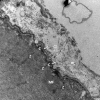Fascial tissue research in sports medicine: from molecules to tissue adaptation, injury and diagnostics: consensus statement
- PMID: 30072398
- PMCID: PMC6241620
- DOI: 10.1136/bjsports-2018-099308
Fascial tissue research in sports medicine: from molecules to tissue adaptation, injury and diagnostics: consensus statement
Abstract
The fascial system builds a three-dimensional continuum of soft, collagen-containing, loose and dense fibrous connective tissue that permeates the body and enables all body systems to operate in an integrated manner. Injuries to the fascial system cause a significant loss of performance in recreational exercise as well as high-performance sports, and could have a potential role in the development and perpetuation of musculoskeletal disorders, including lower back pain. Fascial tissues deserve more detailed attention in the field of sports medicine. A better understanding of their adaptation dynamics to mechanical loading as well as to biochemical conditions promises valuable improvements in terms of injury prevention, athletic performance and sports-related rehabilitation. This consensus statement reflects the state of knowledge regarding the role of fascial tissues in the discipline of sports medicine. It aims to (1) provide an overview of the contemporary state of knowledge regarding the fascial system from the microlevel (molecular and cellular responses) to the macrolevel (mechanical properties), (2) summarise the responses of the fascial system to altered loading (physical exercise), to injury and other physiological challenges including ageing, (3) outline the methods available to study the fascial system, and (4) highlight the contemporary view of interventions that target fascial tissue in sport and exercise medicine. Advancing this field will require a coordinated effort of researchers and clinicians combining mechanobiology, exercise physiology and improved assessment technologies.
Keywords: consensus statement; injury; soft tissue; tendon.
© Author(s) (or their employer(s)) 2018. Re-use permitted under CC BY-NC. No commercial re-use. See rights and permissions. Published by BMJ.
Conflict of interest statement
Competing interests: None declared.
Figures





References
MeSH terms
Grants and funding
LinkOut - more resources
Full Text Sources
Other Literature Sources
Medical
